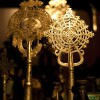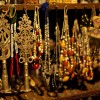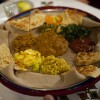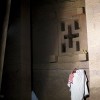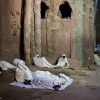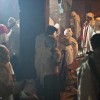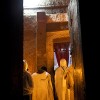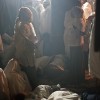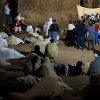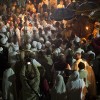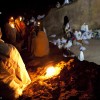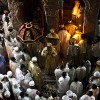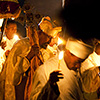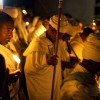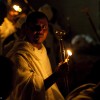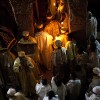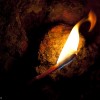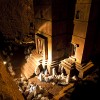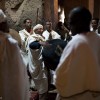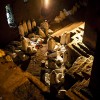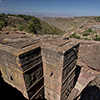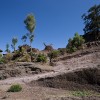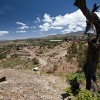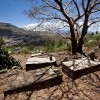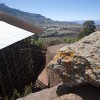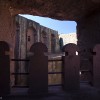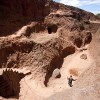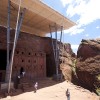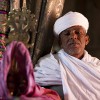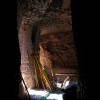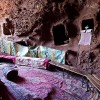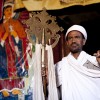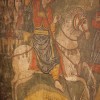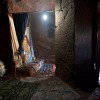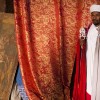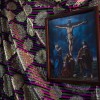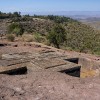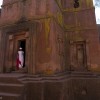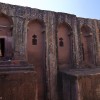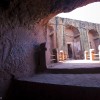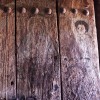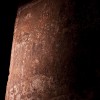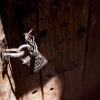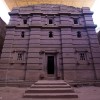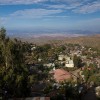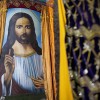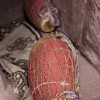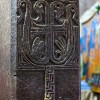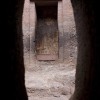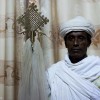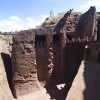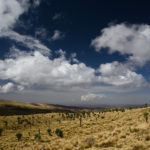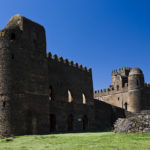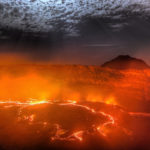Hewn into the bare Rocks – The Churches of Lalibela
Millions of years ago the Ethiopian highlands got unfolded by volcanic activity. There, at an altitude of 2500m, the village of Lalibela is located. It is home to unique churches that are originating from the idea to build a second Jerusalem and became hewn into the bare red hard basalt lava rock. On important religious holidays, like for example Easter, the town develops a very interesting atmosphere of spirituality and touristic internationality.
The sound of the name Lalibela might remind some people of lip balm, but not of an Ethiopian sovereign. After surviving an assassination attempt and having gotten a vision, he decided to build eleven monolithic churches back in the 12th/13th century. The village, yet named Roha, soon got renamed to Lalibela and became an important spot, if not to say the centre of African Christianity during the past centuries. The Ethiopian-orthodox Christians are successors of a group of believers originating from Egypt and lead by Saint Marcus; also known as Copts.
On the eve of Easter Sunday hundreds of pilgrims in their white robes are flocking together in and around the churches. The main ceremonies to celebrate the “birth” of Christ the Redeemer start at about 9:00 p.m. Then in the yard of church Bet Maryam the most sacred relic gets unveiled and embedded into procession as well as ceremonies: the cross of Lalibela. One of the most beautiful moments is when hundreds of candles get lighted at around midnight; a mood of light that in case of Bet Maryam unfortunately gets screwed up by neon spotlights.
Sadly often tourists bother the ceremonies and its atmosphere, for example when big belly daddy from U.S. means to pester the priests with his video camera as if he wants to take a close-up of the gums. Luckily suchlike strange figures soon go to bed and after 2:00 a.m. you can abandon yourself to the vibe of Lalibela.
Another annoyance are the spaceport-like roofs put up by the Italians. Usually a crowd famous for excellent food, awesome design and appreciation of cultural goods, they must have had a bad day when spanning those ugly roofs over the grand churches. Erosion is surely something that has to be faced and avoided, but does this have to happen in a manner of a glass and steel orgy? However, the roofs are clouding the vibe and spirit of the churches massively.
Fortunately the church Bet Giyorgis (![]() ), that is shaped like an equal-sided cross, did not have to encounter the same fate. Except Bet Maryam and Bet Medhane Alem the churches’ interior is through and through Spartan though. Only rarely the neon light unveils cultural gems like a 600 years old painting showing Saint George killing the dragon.
), that is shaped like an equal-sided cross, did not have to encounter the same fate. Except Bet Maryam and Bet Medhane Alem the churches’ interior is through and through Spartan though. Only rarely the neon light unveils cultural gems like a 600 years old painting showing Saint George killing the dragon.
Definitely something taking a lot to get used to it is the nightly long lasting singing of the priests. Without earplugs you won’t find a minute of sleep. It can become worse, for example in Gonder, when several animals like dogs, cats and donkeys are joining the priests’ yowling that is transmitted by a raspy “sound system”.
Similarly annoying are the countless “Hey Mister!” calls, as almost every 2m walked there’s another local coming towards you trying to squeeze you for some Birrs by telling far-fetched stories. Such a behaviour is a pain in the ass and everything but accordable with religious values.
